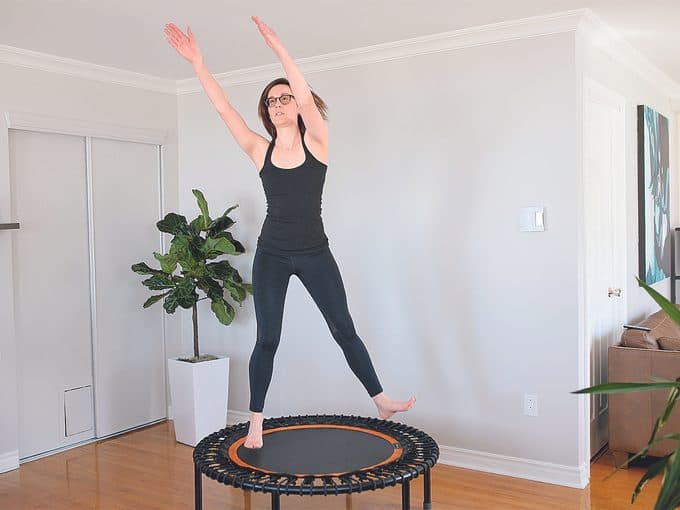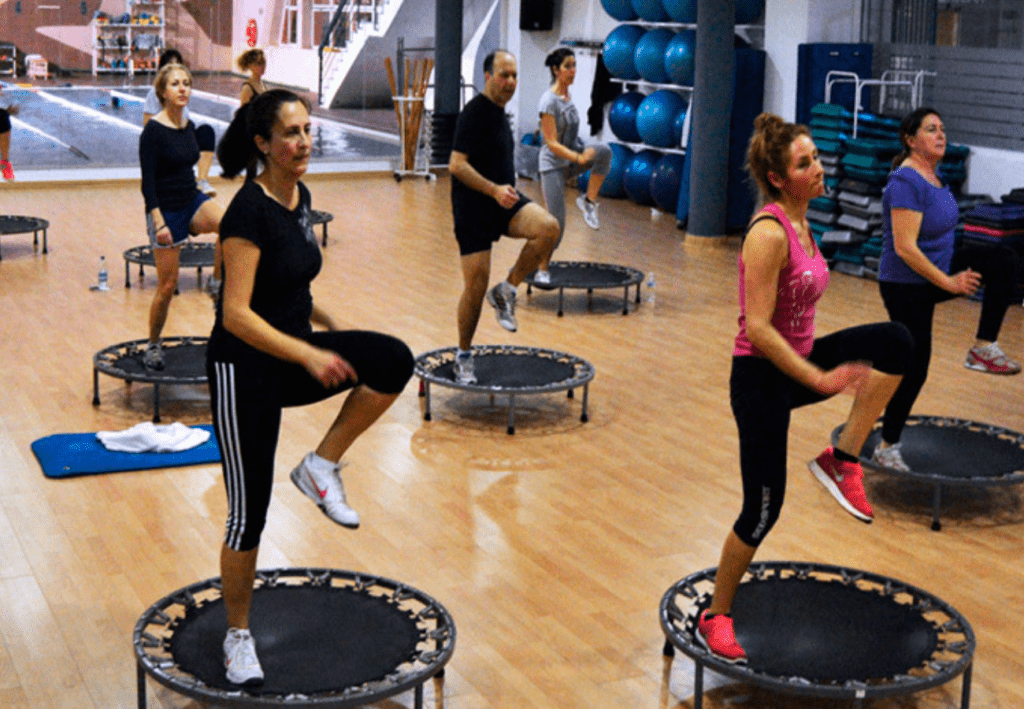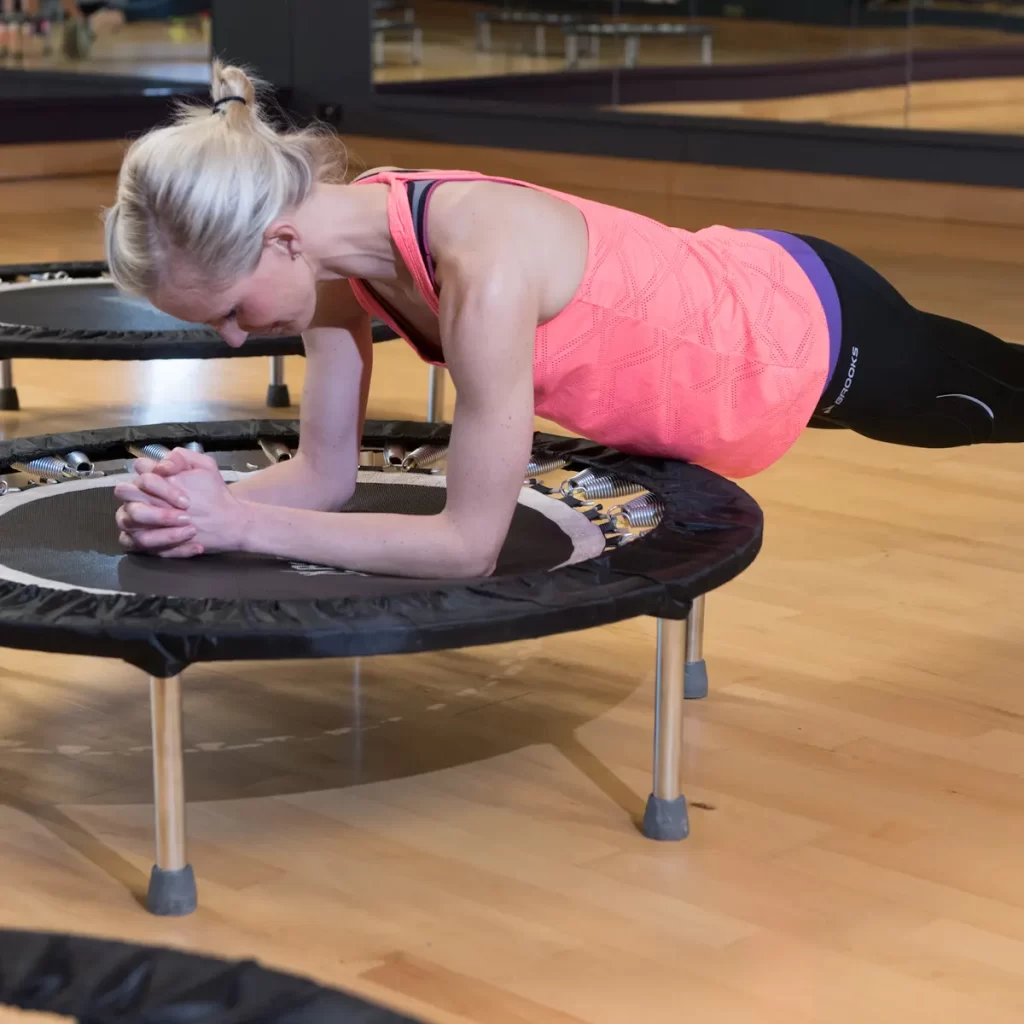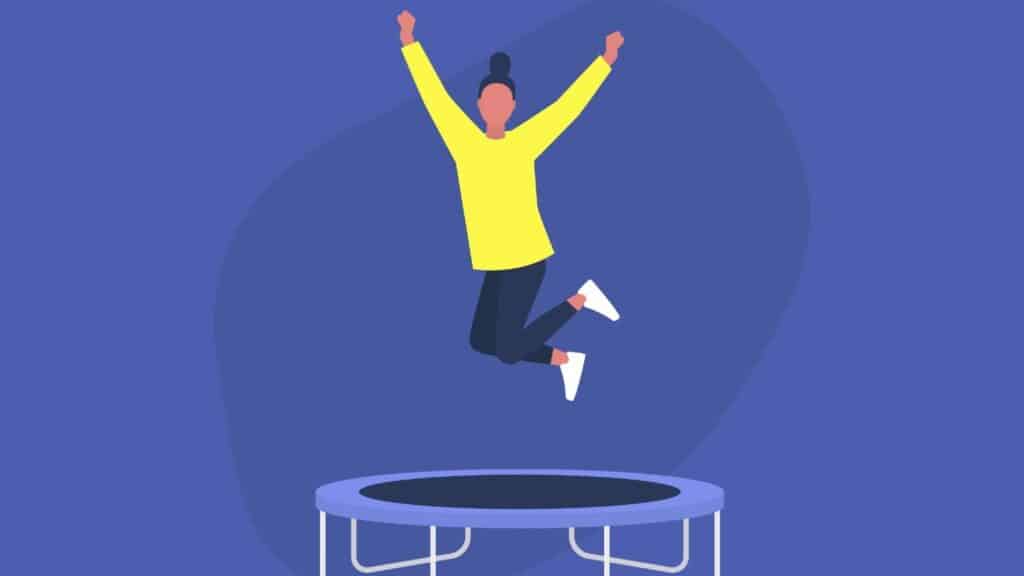Can Rebounding Make You Feel Sick?
Rebounding or jumping on a trampoline is a typical aerobic exercise. Rebounding can help you strengthen your bones, develop your leg muscles, and boost endurance, among other things.
These exercises are becoming more popular with time because of their painless and fun technique. Check out our comparison article if you are shopping for the best rebounders.
These jumps can be slow or fast or mixed. And the most exciting fact about jumping on a trampoline is, it is suitable for individuals of all levels of fitness.
Ready to start your rebounder weight loss journey? Try out our 8-week rebounder program!

But can rebounding make you feel sick? Due to the motion it affect some people, in this article we look at this in more detail.
Although providing plenty of benefits, few people witness distinct reactions in their bodies after working out on a rebounder. These reactions result in feeling dizzy, nauseous, or sick. Let’s look at why rebounding can make you feel sick and how to stop it.

Why Does Rebounding Causes Motion Sickness Or Dizziness?
Motion sickness is a real experience among rebounding. And here’s what your brain experiences:
Generally, your brain is used to perceive only two-dimensional directions. So now, if you suddenly change your direction to three, it gets confused.
To put it in another way, our brain is only trained to move forward and backward or left and right. And these are considered to be safe directions to your brain. But when you are rebounding, you are moving up and forward at the same time.
For instance, if we walk or run, our brain is prepared to move forward. Similarly, if you climb a tree or a lift, your brain is trained to move up or down.
So, when you are awake, your brain has processed the fact that everything below your feet is ‘down’ and everything above your head is ‘up.’ It is evident from this fact that our brain can only process one direction among eight at a time. So, to prepare it to perform normally in different directions, your brain needs time.
However, when you are rebounding, things are different. You change your position and direction simultaneously, confusing your brain. In one instance, it senses ‘up,’ and in the other, it feels ‘down.’
So, these frequent direction changes are hard to perceive by your brain thus, resulting in motion sickness.
Can Rebounding Make you Sick?
What To Do If You Feel Dizzy?
If you feel dizzy while rebounding, don’t worry; you are not alone. Dizziness is very common among rebounders, and luckily, we have ways to reduce it. Some of the common methods used to reduce dizziness due to rebounding on a trampoline are listed below.
#1 Start With Slow Bounces
If you are a beginner, try to go slow when you rebound for the first time. Then, while bouncing, gradually increase your speed and height and observe the changes if you don’t feel dizzy.
So here, the main motive is to know the exact point you are feeling dizzy. Then, the moment you do, stop bouncing.
#2 Deep Breath Therapy
The instance you feel dizzy, stop rebounding and get off from the trampoline. Calm yourself and take deep breaths. Try to relax your body while breathing.
After some time, take a slow walk, and when you feel normal, you can continue rebounding.
#3 Don’t Go Too High
If you are a beginner, you need to know your threshold. Check your type of rebounder, if it is a bungee or spring rebounder this will impact how high you can bounce.
So, start initially with slow bounces and then try to go higher and higher. The point where you feel dizzy is away from your threshold. Try not to exceed it for some days. However, you can surpass your threshold and go higher little by little when used to it.

What To Do If You Feel Sick?
Motion sickness can come in various forms. Dizziness is one such symptom, but there can be other symptoms in your body like nausea, headache, vomiting, mild stomach ache, etc. So even if you get these symptoms while rebounding, you should stop right away.
However, this is not the end; just like dizziness, you can also cure these mild symptoms of motion sickness. The solutions are very similar to dizziness.
You can opt for a motion sickness tablets, these are handy to keep near your rebounder if its something you suffer from regularly:
Trampoline Sickness
If you ever notice any of the above symptoms, stop bouncing, get away from the trampoline, close your eyes, and breathe heavily. Take a walk until you feel normal, and then you can resume.
Nonetheless, if your headache is not acute and you feel you will not continue, we have an extra tip for you.

- Step 1: Put your hands on each side of your head.
- Step 2: Place both your thumbs under your eyes and the other fingers behind your head.
- Step 3: Try to squeeze your thumb and fingers together.
- Step 4: Hold this position for 40-45 seconds.
- Step 5: after 45 seconds, move your head downwards on the position as if you are staring at your feet.
- Step 6:Start easing the pressure slowly and stay in this position for 30 minutes more.
- Step 7: After this, repeat steps 2 and 3 and hold for as long as you don’t feel normal.
Even if you want to avoid motion sickness, you can perform this before and after doing Rebounding.
Can Jumping on a Trampoline Cause Vertigo
Vertigo is caused by moving your head vigorously in a vertical plane. Jumping on a trampoline cannot cause vertigo as much as other exercises such as pilates or yoga where you put your head upside down. But it can still make you slightly disorientated if done for extensive periods.

Conclusion
Rebounding is a fun exercise, although like most exercises comes with some negative side effects. Sometimes you can experience motion sickness due to the movement. So, while you are rebounding, try to relax and enjoy the process.
Nonetheless, if you still feel the same after following the steps discussed in this article, you may consult your physician.
An ex-triathlete, fitness coach and writer with a Masters in Sports Physiology. Fitness is my passion and I've had my fair share of home fitness equipment tried and tested!


